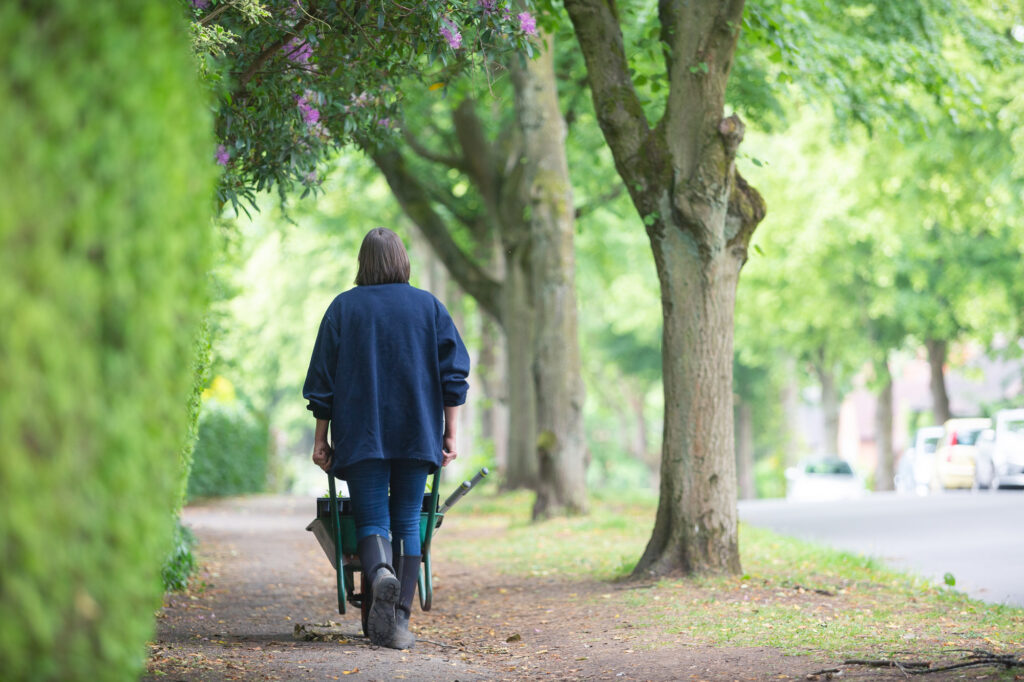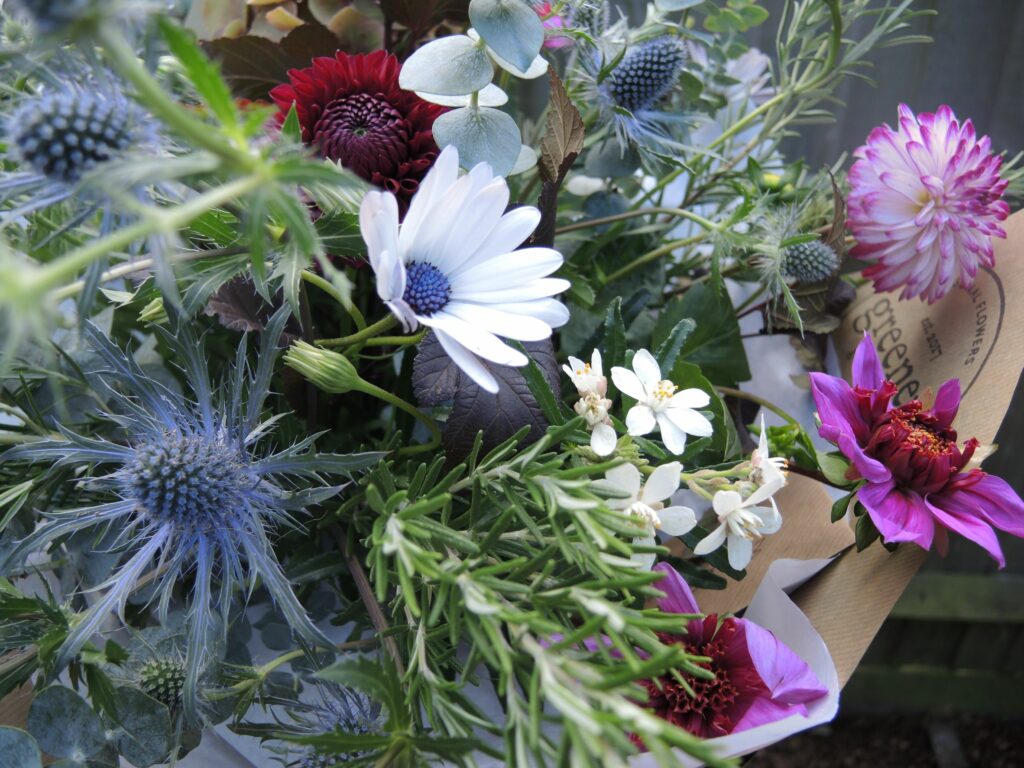No dig methods
Hello everyone! Tim and Eileen from Tin Shed Flower Farm here to talk to you about the “no dig” method of flower growing, as we understand it.
When we moved to our little cottage in rural Suffolk, there were seven raised beds in the front garden, all overgrown with weeds. After spending the better part of a day double-digging just one of the 3ft x 3ft beds, we had the bad backs and bad attitude to show for it. We thought there had to be a better way…
Our first exposure to no dig was a visit to fellow FFTF member Anna’s Flower Farm, followed by an impassioned discussion on the subject with a gardener at The Lost Gardens of Heligan in Cornwall. Both pointed us in the direction of Charles Dowding, who has become our no dig guru. We returned home and binge-watched everything we could find about Charles, and we were soon converted.
The basics of no dig
We set our cutting beds straight onto grass, so the first step was to lay some light-excluding but biodegradable material to kill the grass off. We trialled three different kind of material: cardboard, hessian, and recycled wool sheeting. The cheapest of these, and ultimately the quickest to break down and combine with the soil, was cardboard.
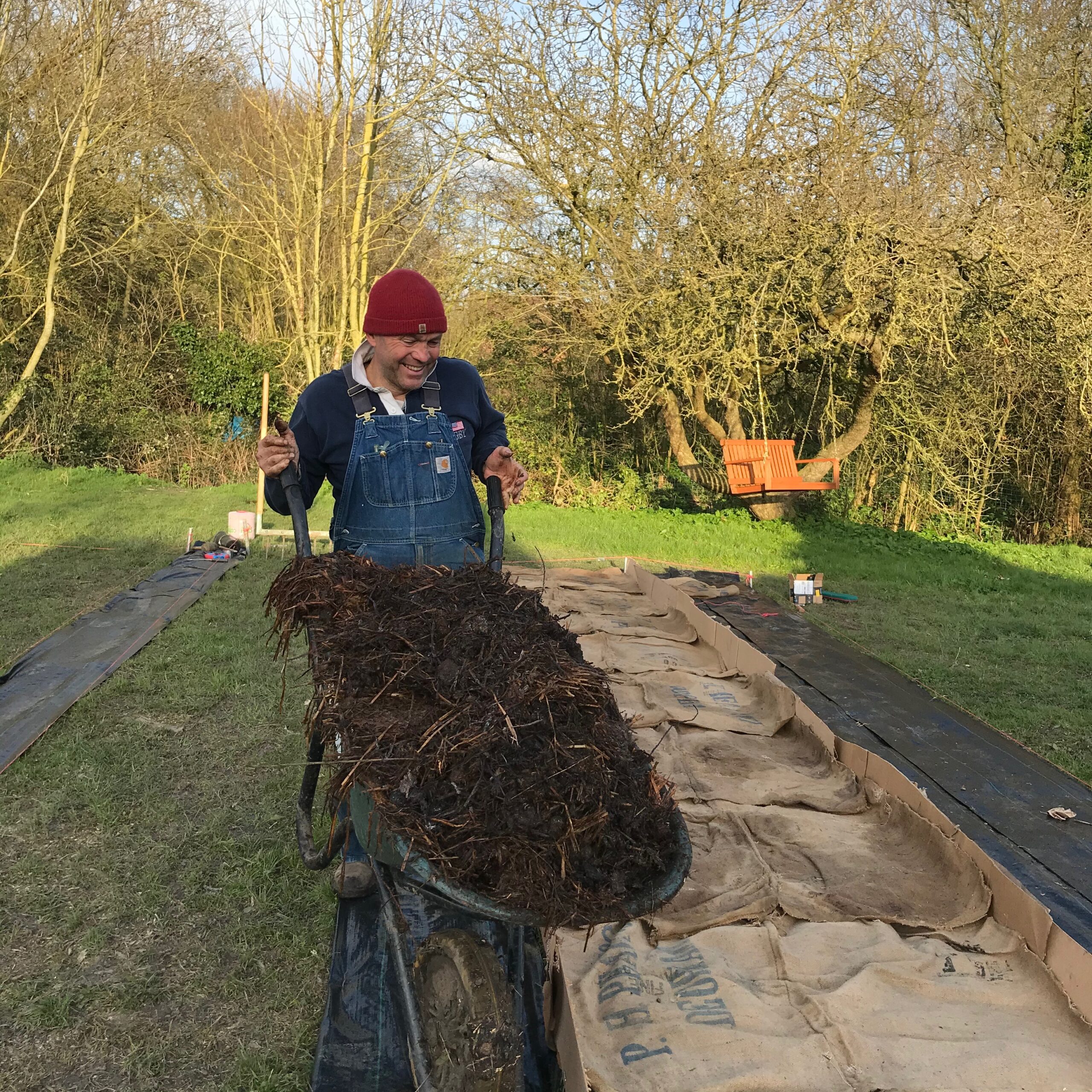
How it all begins: A cardboard base layer to kill off the grass, with compost simply added on top.
On top of our base materials we piled a good 8 inches of compost, using a mix of our homemade horse manure and straw compost (our favourite), organic mushroom compost from a local grower, and municipal green waste.
The green waste was far from ideal as it arrived “hot” (not sufficiently composted), contaminated with plastic, and devoid of microbial activity. It only took one load of this to make up our minds not to use it again.
We planted our crops directly into the compost mix – and the process with each new season is simply to clear the old crop, add a new layer of organic matter, and plant into it once more.
Why it works for us
First and foremost – efficiency! We have had almost zero weed pressure with our no dig beds. As we do not turn the soil, we don’t expose buried weed seeds to light, and the increase in beneficial soil fungi also discourages their germination. We hoe off a few random weeds during our weekly deadheading, but that’s all. It’s almost like magic, and a total game changer.
Second – soil quality. We grow on a very clay based soil, which was compacted and poorly drained when we moved here. Since starting no dig, the soil structure has improved dramatically: it is rich, dark and friable, with much better drainage and aeration. This is remarkable considering we are only going into our third year of growing. Our organic matter feeds the plants, and we amend the soil once at the beginning of each season with a sprinkle of organic fertiliser to give our seedlings a jump-start. That’s it – nature does the rest.
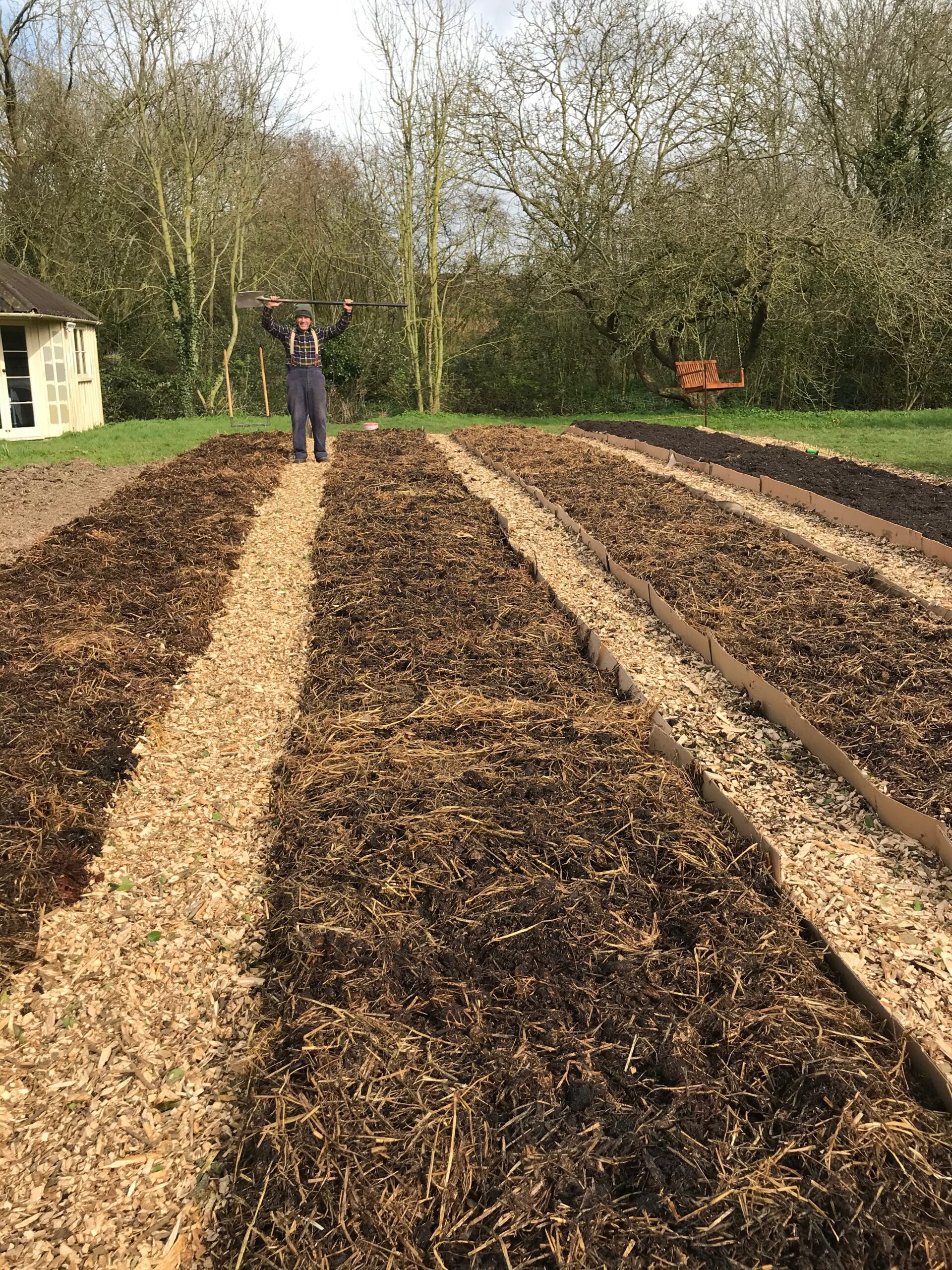
Completed no dig beds ready for planting.
Third, and most important for us – balance. Because our soil is healthy, the soil food web is thriving. Pests capitalise when nature is out of balance, and tilling the soil can harm their natural predators. We do have little bouts of pest activity – aphids, pollen beetles, etc. – but the key word here is “little”. The lack of any chemicals or pesticides in our growing system means that all the beneficial soil fauna – ladybirds, birds, snakes, beetles, spiders, wireworms, nematodes, and so on – can flourish and keep any harmful creatures in check.
A bit more detail – some rules of no dig
Rule #1. Disturb the soil as little as possible. The critical thing is not to break the soil surface, which interferes with its physical structure and complex ecology. But other, less invasive interventions can still be made. On our site, for example, as well as the initial compaction, there was a lot of buried rubble from a nearby ruin. To help with the early stages of soil recovery, Tim used a broadfork to loosen and aerate the top- and sub-soil without turning and mixing the two together.
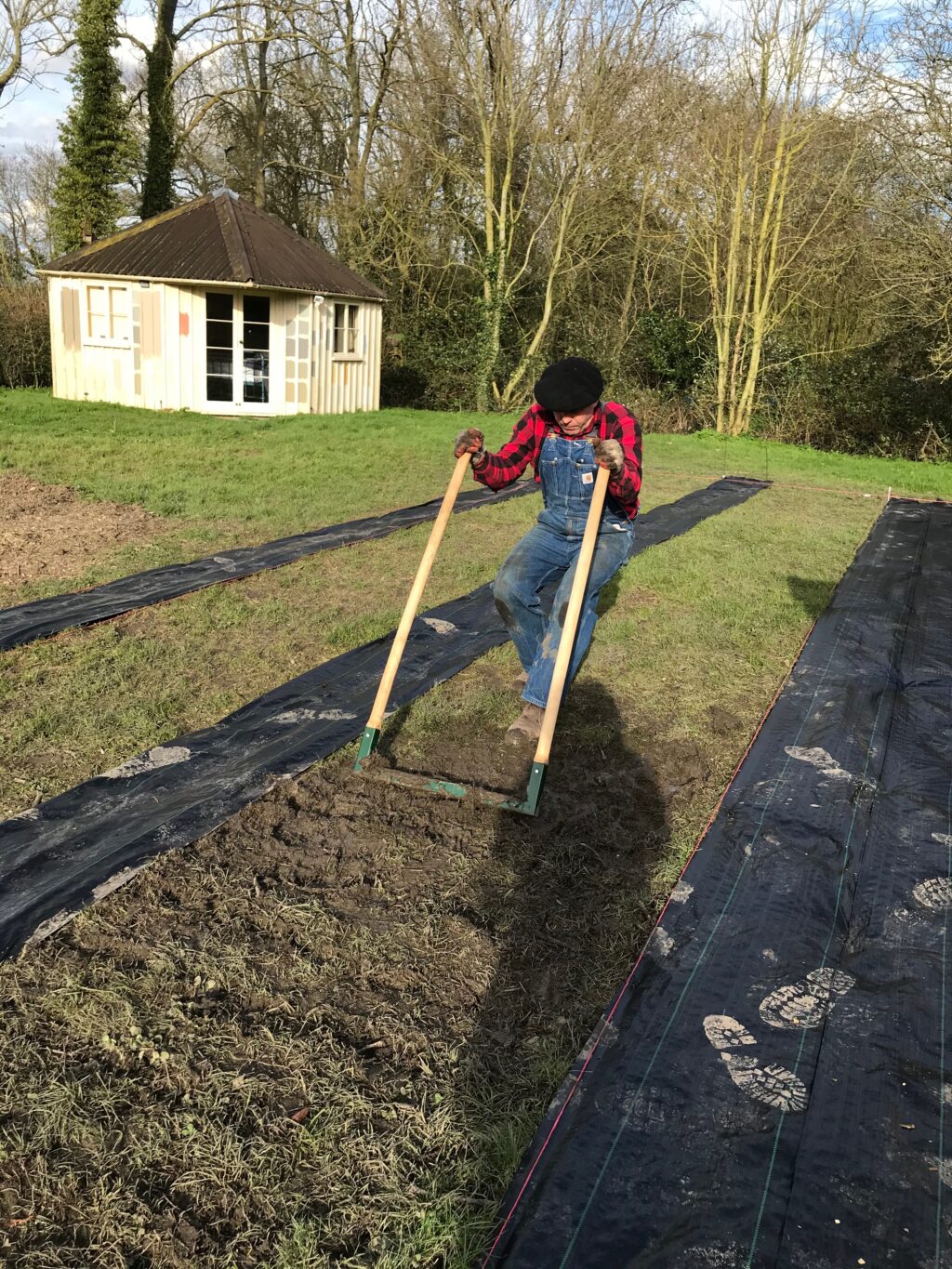
Tim using a broadfork to help reverse soil compaction.
Rule #2. Keep the soil planted. This is important for the soil food web, which in turn dictates the overall health of the soil. When we harvest our crops, we cut them off at the base and leave the root mass in the ground to feed the soil microorganisms and everything that depends on them. Cover crops can also be used over winter to keep the root environment active. We sow them in early September so they have a chance to germinate and establish before light levels drop too low; then in spring, we mow them short, cover them with a tarpaulin for a few weeks to prevent any regrowth, and add our new layer of compost directly onto the bed.
Rule #3. Keep the soil covered. We made this mistake last year and cleared our beds in the autumn, leaving the soil exposed. Not only did we lose valuable compost to erosion and exposure, but we also provided perfect conditions for weeds to take over. This year we have made sure to add a thick layer of mulch to any unplanted beds, which can be removed and reused if it is not a suitable growing medium.
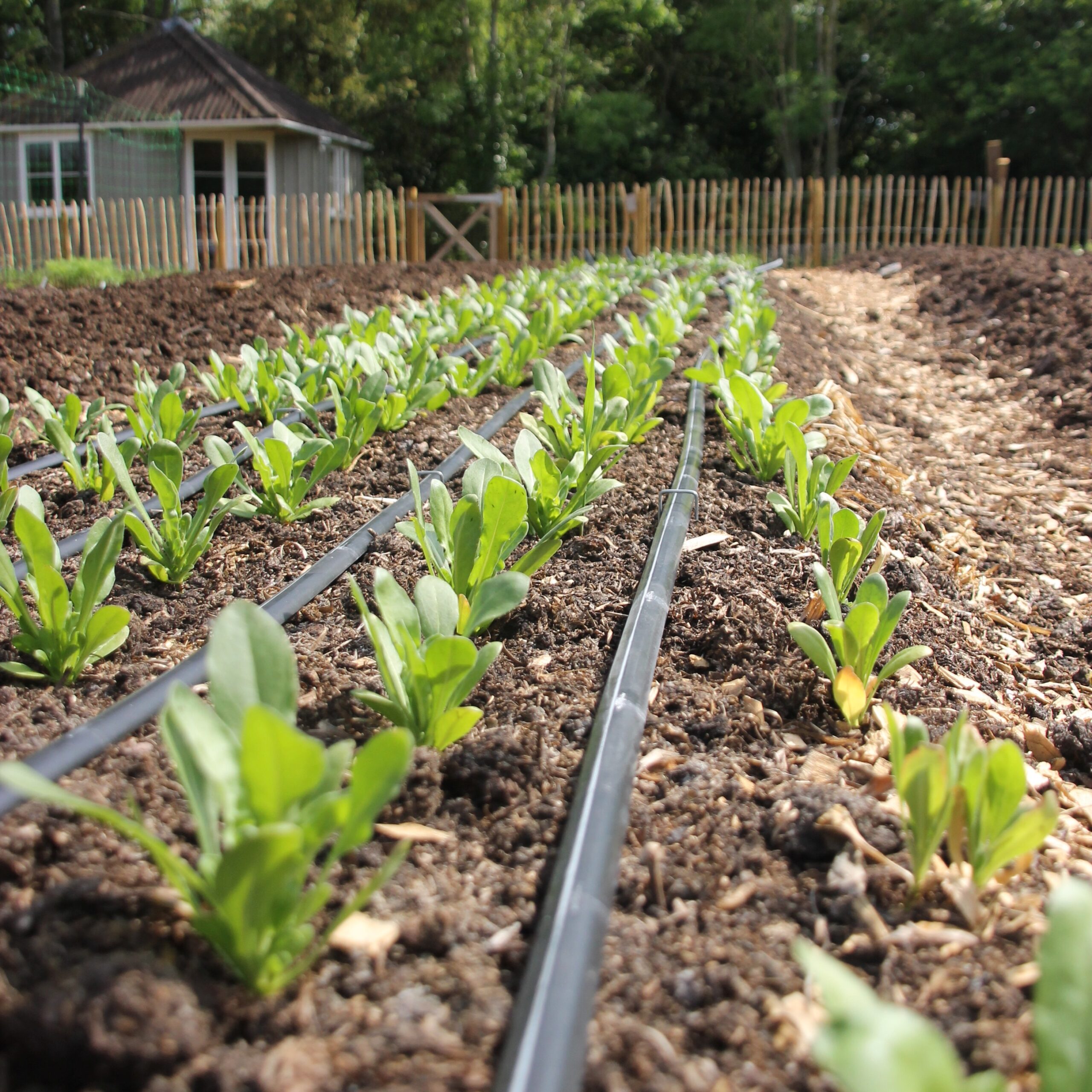
Keeping the soil planted is the best way to conserve its ecology and nutrients, and prevent the damaging effects of erosion and exposure.
Will it work for you?
We acknowledge that there may be situations in which no dig is not the best option. Maybe you are growing on a large plot of land, and the setup cost would be prohibitive. Maybe you don’t have access to enough good quality compost. We do encourage you to try a test bed nonetheless and see how it works for you. The upside is that once you get a no dig bed established, all it needs is a 2 – 3 inch top up of compost each year.
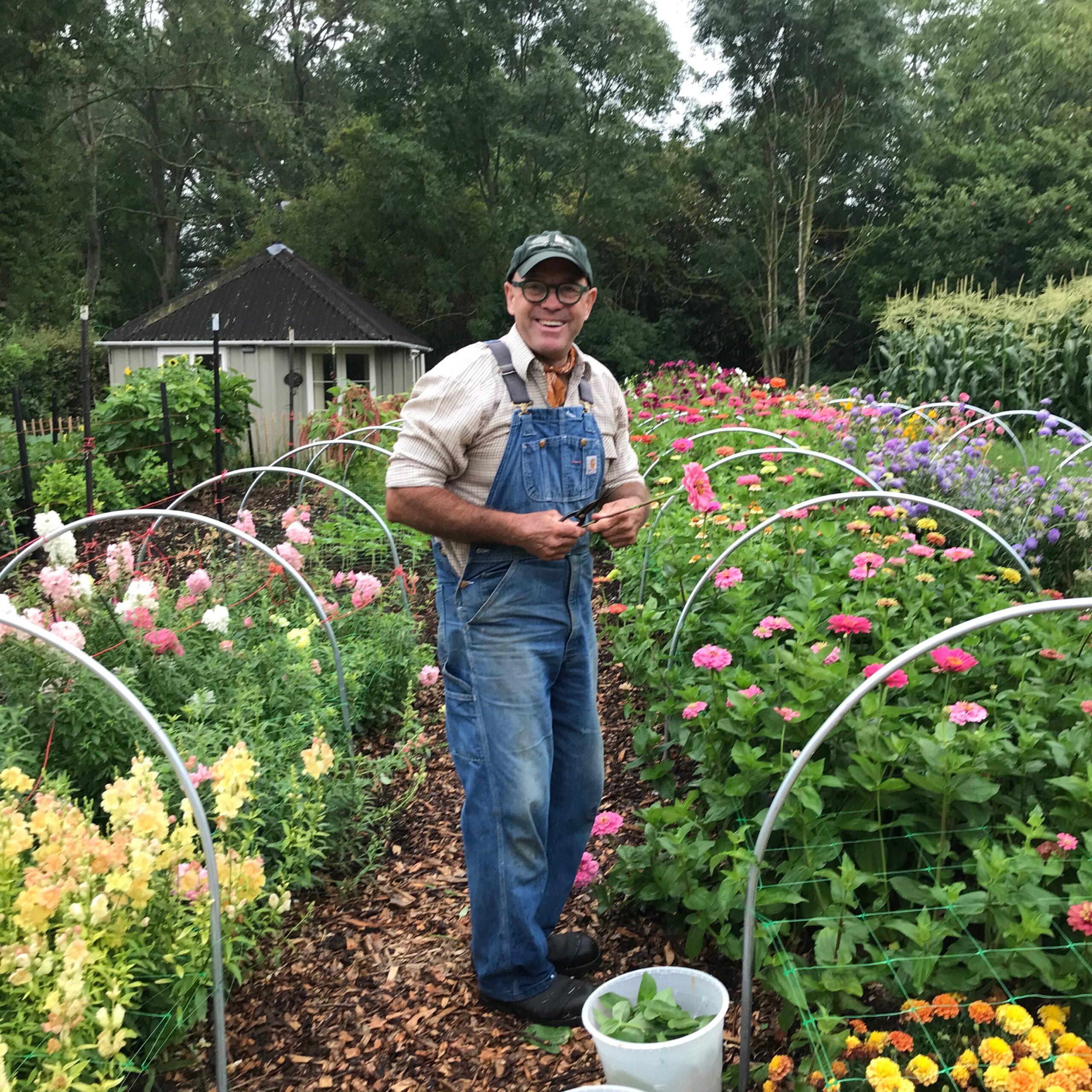
Stunning results from a no dig approach.
For those of you who want to learn more about no dig, we recommend researching a few of these brilliant growers:
Charles Dowding. King of no dig, with lots of free videos for your dreary January evenings. And great books. And seminars. And a lovely individual!
Singing Frogs Farm, Paul and Elizabeth Kaiser. If you don’t fall in love with this couple, well… There are Youtube tours of their farm, as well as numerous podcasts to listen to. They were no dig when it wasn’t cool, and pioneers in biodiversity growing.
Jesse Frost. An American market gardener who has written a very informative book on no dig called The Living Soil Handbook.
Dr. Elaine Ingham. If you want your brain to explode with the science of the soil food web, she’s your lady!
